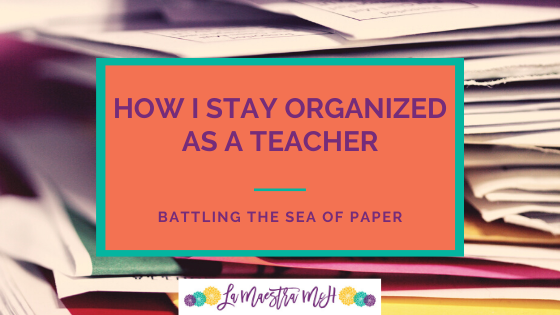What I Do: A Blended Approach
I’m about to say something that may be a bit controversial. Prepare yourself.
I think comprehensible input is great AND I believe there is value in explicit grammar instruction AND teaching with stories is an effective method. Authentic materials should be used in language classes AND materials created exclusively for language learners should be too. There is not ONE right way to teach.
Rarely in life is any thing accomplished with just one strategy. Health doesn’t come just from eating healthy. It’s a combination of diet, exercise, rest, emotional well-being, genetics, and more. An athlete doesn’t just compete. They run drills, study film, analyze opponents, work out, etc. Learning is no different. Learning a language is as complex and nuanced as the students in our classes.
I began teaching as a grammar-loving-fill-in-the-blank-conjugation-rules teacher because that’s how I was taught Spanish. And you know what? As a student, it worked for me. Those rules and drills organized the language in my brain and allowed me to adapt quickly the first time I set foot in Mexico. In a couple of weeks I understood my native speaking classmates and could competently communicate in Spanish with them. As the years passed, I learned about other ways of teaching. I heard about TPRS & comprehensible input for the first time. I realized there is more than one way to teach and learn a language. I began to ask myself what real world situations my students need to be prepared for and build lessons and activities around those. I still teach verb charts and conjugation rules. I also use stories, songs, videos, and role play. I like to present content in multiple ways.
Last week I introduced Spanish 1 to -ar verbs in the present tense. I began with this discovery sheet. For some students, this immediately clicks and they see the pattern of the language. Others need a bit more guidance before the light bulb goes off. And for some, this is a frustrating exercise. I follow up this sheet with a brief explicit explanation of how conjugation works (drop the -ar, add -o for yo, etc). The next class, I follow up with a simple story that highlights the conjugations. That’s the same info presented in three ways to help reach different types of learners.
There is not one right way to learn a language or to teach a language. I’m passionate about take the best strategies from different methods and blending them together for learner success.
Want to follow along on my journey? Stay tuned for more blog posts, follow me on Twitter @lisajmch and find me on Pinterest @lamaestramch!



